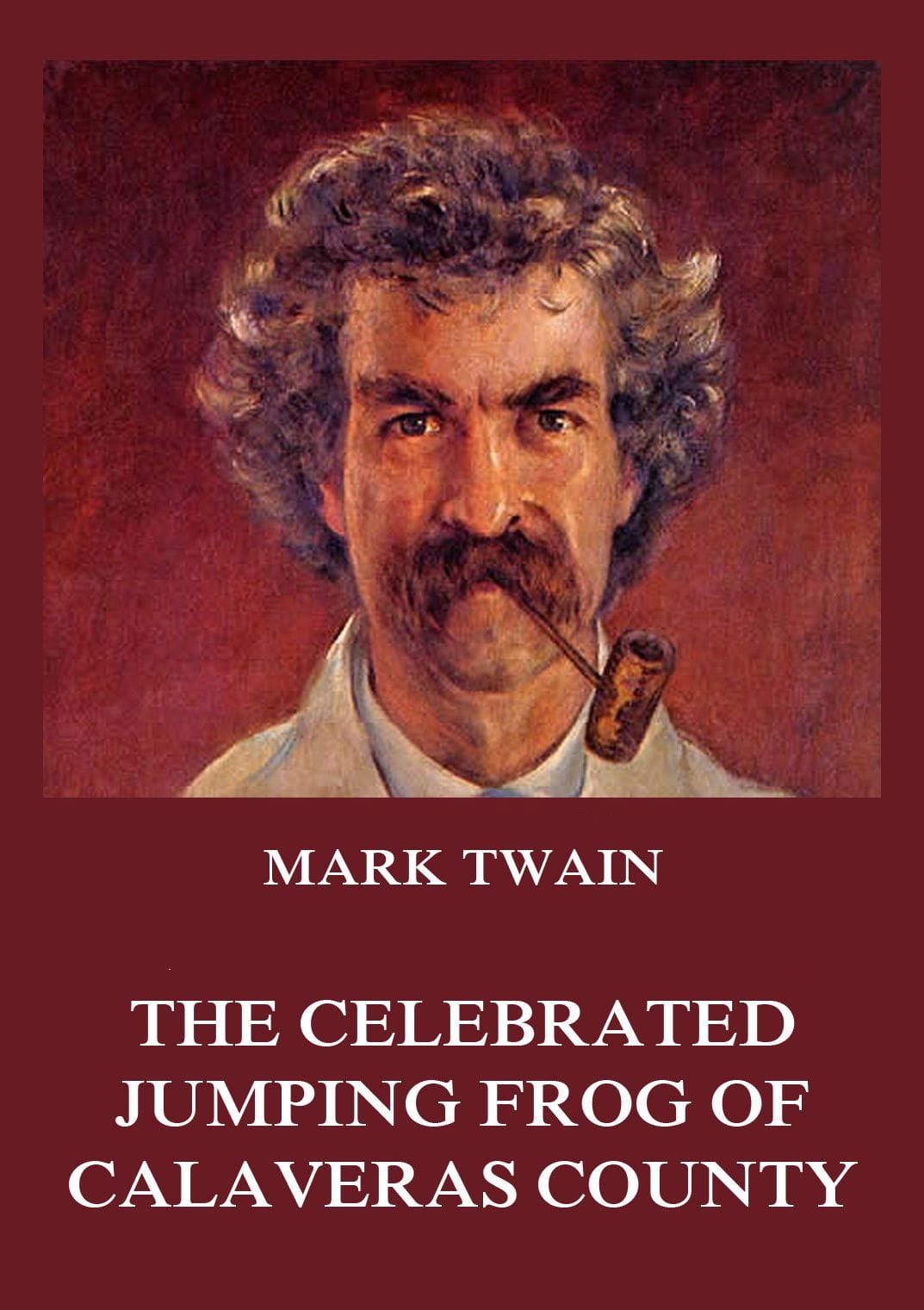Howdy, partners! Ever heard tell of a frog that could jump higher than a grasshopper on a hot skillet? Well, gather ’round, because Mark Twain’s “The Celebrated Jumping Frog of Calaveras County” is a rootin’ tootin’ tall tale that’ll have you hollerin’ with laughter. This ain’t just any yarn; it’s a comedic masterpiece that’s been tickling funny bones since 1865, a reflection of American humor, and a sly wink at our own gullibility. So, hitch your wagon to this here article, and let’s explore the story’s swampy depths, from its hilarious characters to its lasting cultural impact.
A Frog, a Gambler, and a Whole Lotta Laughs
Ever find yourself in a dusty saloon, listening to a yarn spinner weave a tale so tall it scrapes the sky? That’s the essence of Twain’s “Jumping Frog.” Our story unfolds in Calaveras County, California, during the Gold Rush, a place brimming with prospectors, gamblers, and characters as colorful as a desert sunset.
Our narrator, a greenhorn from the East, stumbles upon old Simon Wheeler, a man who can spin a yarn longer than a river. Wheeler launches into the story of Jim Smiley, a gambler who’d bet on anything that walked, crawled, or flew. But Smiley’s real pride and joy was Dan’l Webster, a frog trained to jump like a flea on a hot griddle. Smiley was so sure of Dan’l’s prowess he’d wager against anyone foolish enough to challenge him.
Enter a stranger, seemingly unimpressed by Smiley’s boasts. He challenges Smiley to a frog-jumping contest. While Smiley’s off finding a competitor frog, the stranger pulls a fast one, filling Dan’l with lead shot. Needless to say, Dan’l’s jumps become more of a plop, and Smiley loses his bet. He’s left bewildered, and the stranger hightails it out of town with the winnings.
This ain’t just a story about a frog, though. It’s a witty commentary on human nature, our love of a good gamble, and our tendency to swallow a tall tale hook, line, and sinker. It’s a snapshot of the Wild West, preserved in Twain’s signature style. Want to learn more about other influential authors and their works? Check out Sweat by Zora Neale Hurston.
Dan’l Webster: More Than Just a Hoppin’ Amphibian
Dan’l Webster, the celebrated jumping frog, isn’t just a comedic prop; he’s a symbol brimming with meaning. He represents vulnerability, tricked and weighed down by the stranger’s lead shot. His grand name, borrowed from a famous orator, satirizes inflated reputations. Yet, even filled with lead, Dan’l tries to jump, embodying a certain underdog resilience. He’s a stand-in for the common folk, often manipulated by those perceived as more sophisticated. Dan’l Webster is a tiny frog carrying a heavy load of symbolism.
Twain’s Twang: A Look at the Story’s Style and Impact
Twain’s writing is like a well-oiled joke machine, firing off witty observations and exaggerating just enough to make you chuckle. His use of dialect and colloquialisms transports us to the heart of the Wild West, and his pacing keeps us hooked like a catfish on a line.
“The Jumping Frog” catapulted a young Samuel Clemens (Twain’s real name) into the literary spotlight. It’s been translated into countless languages, adapted into an opera, and even inspired a real-life frog jumping contest in Calaveras County, California. Talk about a legacy!
The Story’s Sticky Legacy: More Than Just a Fly in the Ointment
“The Jumping Frog” isn’t just a funny story; it’s a piece of American folklore, a testament to Twain’s genius for spinning a yarn. Its impact is still felt today, from art and festivals to everyday expressions and our understanding of American humor. Some scholars suggest the story satirizes political storytelling of the time, while others see it as a comment on human gullibility. The debate continues, adding to the story’s enduring fascination.
Leaping into the Details: A Deeper Dive into the Pond
The Nitty-Gritty: A stranger tricks Jim Smiley into a frog-jumping contest, sabotaging Smiley’s frog, Dan’l Webster, and winning the bet.
The Players:
- Unnamed Narrator: An Easterner seeking information about Rev. Leonidas W. Smiley, only to be sidetracked by Simon Wheeler’s tale.
- Simon Wheeler: A garrulous old miner with a knack for storytelling, specifically, the tall tale.
- Jim Smiley: A compulsive gambler easily duped by the stranger.
- Dan’l Webster: The titular jumping frog, a symbol of various themes, from innocence to the American underdog.
- The Stranger: A cunning con man who exploits Smiley’s trusting nature.
The Big Ideas:
- Humor and Exaggeration: Twain’s use of hyperbole and dialect creates a laugh-out-loud experience.
- Tall Tale Tradition: The story embraces the classic elements of a tall tale, with larger-than-life characters and improbable events.
- Social Commentary: A subtle critique of gambling, competition, and the human tendency towards gullibility.
- Regionalism: Captures the spirit of the American West, with its distinct characters and setting.
A Look Back:
- First published: 1865 as “Jim Smiley and His Jumping Frog.”
- Later retitled: “The Celebrated Jumping Frog of Calaveras County.”
- Career Launchpad: The story’s popularity helped launch Twain’s literary career.
- Translation Troubles: Twain “back-translated” a French translation of the story, resulting in a hilariously garbled version, highlighting the nuances of language and humor.
- Operatic Adaptation: Composer Lukas Foss turned the story into an opera, showcasing its adaptability and enduring appeal.
The Ripple Effect:
- Calaveras County Frog Jumping Jubilee: An annual frog-jumping contest inspired by the story, adding a real-world dimension to the fictional tale.
- Continuing Scholarship: Debates about the story’s origins and meaning continue to this day, fueling ongoing interest and interpretation.
Jumping to Conclusions: The Moral of the Story
“The Jumping Frog” whispers some important life lessons amidst the laughter. It cautions against excessive gambling, blind trust, and unchecked overconfidence. It reminds us to be wary of tall tales and to value humility. While the story’s moral isn’t explicitly stated, it’s woven into the fabric of the narrative, prompting us to reflect on our own behavior and the world around us.
Recommended Titles (Need Competitor Titles to Complete)
To suggest trending article titles, please provide a list of your competitors’ article titles. Once you provide that, I can analyze them and recommend three titles that leverage trending keywords.
Untapped Potential: Even More to Explore
While much has been written about “The Jumping Frog,” there’s always room for deeper exploration. Consider delving into the psychological motivations of the characters, the story’s relevance to contemporary society, its contribution to the image of the American West, or even the debate about its possible origins in earlier folktales.
By exploring these avenues, your article can leap ahead of the competition, offering a fresh and insightful perspective on this timeless classic.
- Unlock Elemental 2 Secrets: Actionable Insights Now - April 2, 2025
- Lot’s Wife’s Name: Unveiling the Mystery of Sodom’s Fall - April 2, 2025
- Photocell Sensors: A Complete Guide for Selection and Implementation - April 2, 2025
















